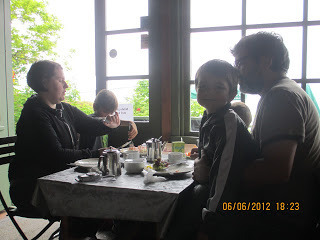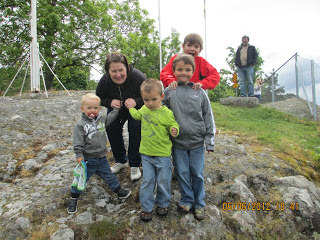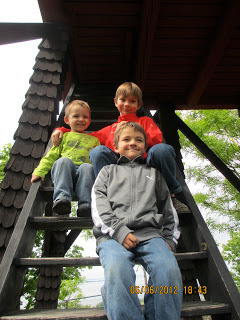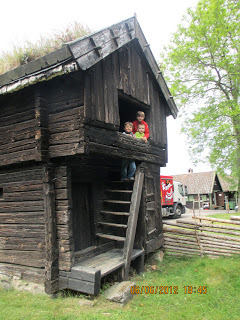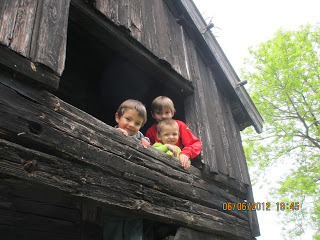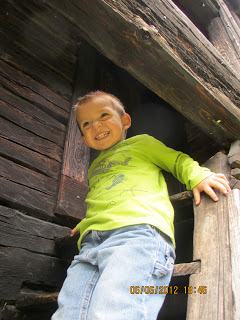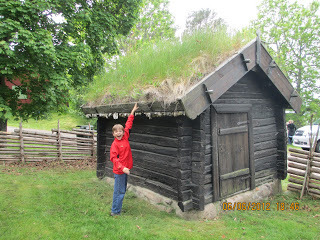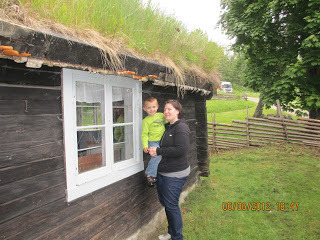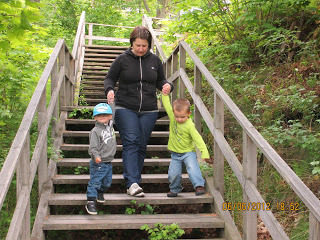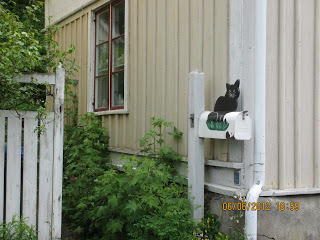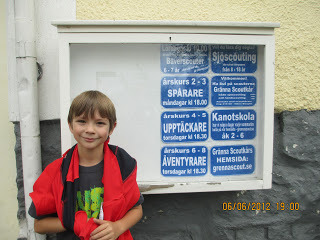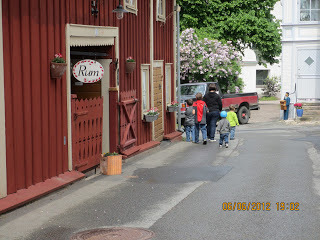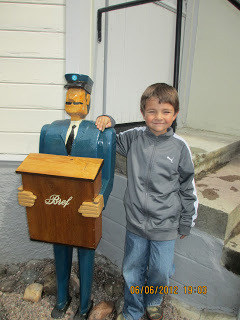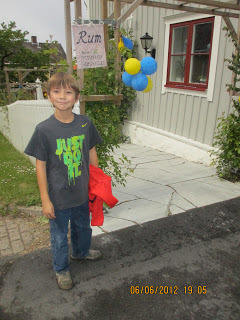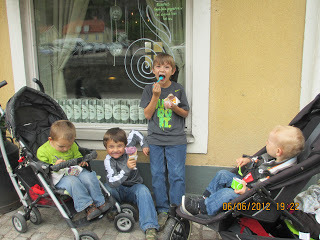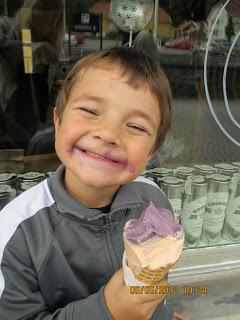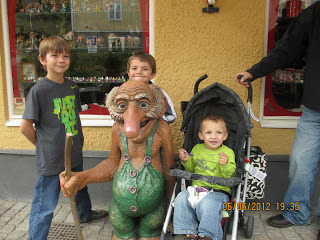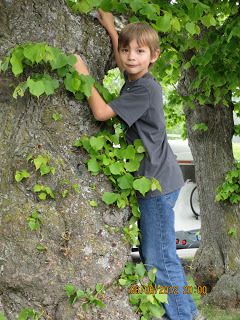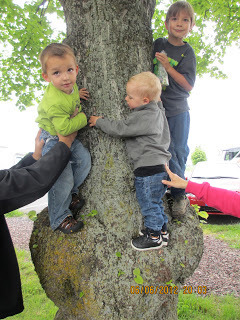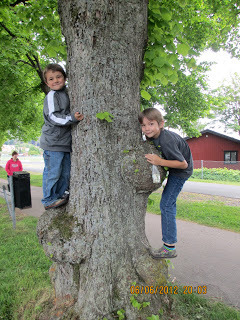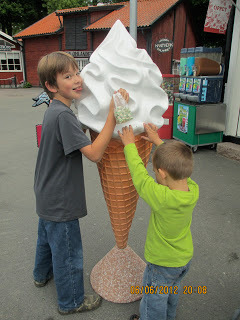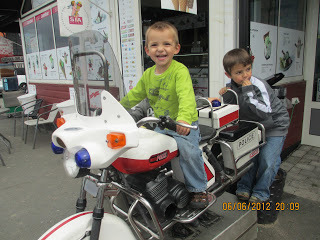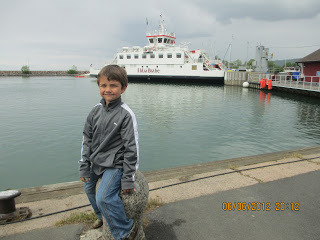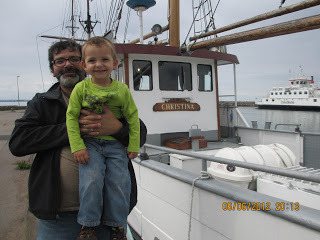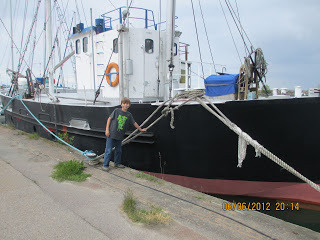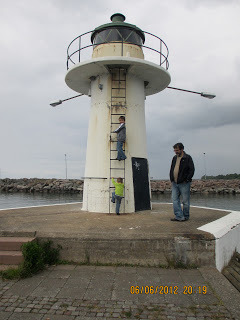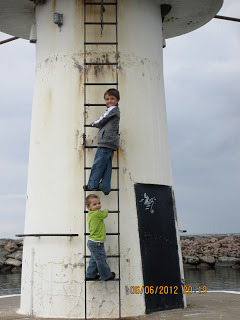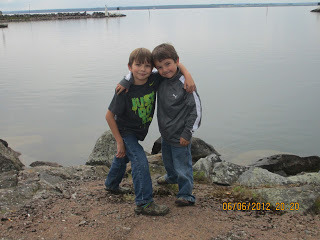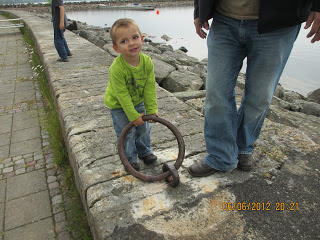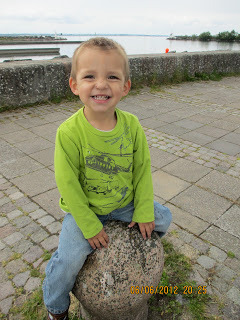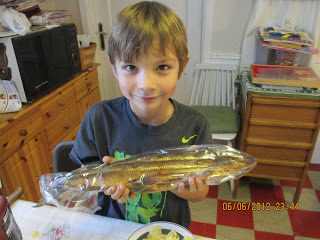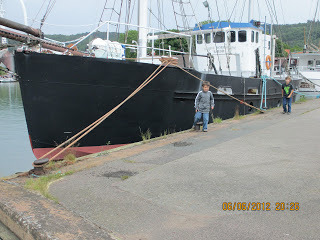René Saldaña Jr.'s Blog, page 3
December 17, 2013
Creative Writing in the Classroom: Well Worth the Work, Part I
A while back, my family took to watching archeology-related shows on PBS, during which our then-five-and-a-half, Lukas, sat spellbound at all of the bones, treasures, and assorted old stuff that was unearthed and put on display for viewers; after which, without any prompting from his teacher-parents, he stated rather matter-of-factly that “When I grow up I want to be an archeologist.” You can imagine my joy at the news because this same thought came to me, though much later in my life (I was in junior high school when I decided this same line of work suited me). Nobody ever asked me then what I wanted to be when I grew up, but if they had that’s what I would’ve answered.
Back then, though, the last thing on my mind that I would want to be was writer. In those days it didn’t occur to me that someone would want to be an author. Why would anybody choose that as their job? We all wrote essays and book reports in class, so we knew first-hand the hassle writing was. But to do it as a job, like my father worked for a paving company for upwards of 12 hours a day? The thought never crossed my mind. Of course I knew there had to have been someone jamming words together into sentences into paragraphs into chapters into books. I wasn’t dense. But the materials we read in class were nothing more than texts we were assigned to plod through. They were by Ray Bradbury, whoever in the universe he was; Guy de Maupussant, whose name I had problems pronouncing and as for his masterpiece, “The Necklace”—quelle horreur for a young middle grader; and O. Henry with his silly trick endings. But to me, a student, they were nothing more than names on book covers. I read them because they were required of me and I wanted the high grades. The authors were long dead, or, if they were still living (which I had no way of knowing, really, and no desire to find out), they were from faraway places like London or New York City, all strange and exotic and inaccessible to a boy from deep South Texas. Nevertheless I read them. They would help me become an archeologist. That is, until I discovered the tedium of the dig lasting between several months to years, with the likely possibility that I may not uncover anything of great significance. I’ve got no memory of it, but I must have changed my tune quick because when I applied for university a few short years later, I checked graphic design for my major, not archeology or anything else connected to science or history. But that didn’t fit me either. Nor did accounting, journalism, or publishing.
Author, then, if it entered my mind (which I’m positive it didn’t) was for others to take up as a vocation. It was for the leisured, the monied, the educated. None of which I was. In high school I was required to write two fictional pieces, for which I received As, but even so I didn’t entertain the notion of myself as would-be writer. (On a side note, I’ve kept both stories, now hidden away in some unmarked box in the deepest, darkest corner of our garage, buried there because I realize now they are horrible and cheesy. As far as stories go, embarrassingly so.)
It wasn’t until I was in my second year of college that I granted myself the permission to conceive of myself a writer-in-training. Not a writer, mind you, but one merely in the making. With years of training ahead of me still if I so chose this course. I had no assurances of success, only of hard work and certain rejection. Even so, I chose the path that would require of me much. Ultimately, argues author Nicholas Delblanco, “the definition of a writer is, simply, ‘one who writes’” (135). This is not to say that the simple act of my putting pen to paper automatically earned me the right to call myself “writer.” Like I said before, as early as high school I wrote, but I wasn’t a writer. To be able to call myself a “writer” would take more than scribbling a story down in a notebook, pounding my chest when I’d finished a draft, and pronouncing myself so. “What it comes down to,” writes Delblanco, “both at the end and in the beginning is work….work and work and work” (135). He likens the process of becoming a writer to a medieval cadre: after apprenticing himself to a master-craftsman for some time, the apprentice turns journeyman laborer, and eventually, having learned what he can at this second level, he becomes master-craftsman himself (124).
Such a master is short story writer Raymond Carver who says, “There has to be talent” (87). Cynthia Rylant agrees: “…writers are born with the word in their blood and the plain truth of it is not everybody can be a writer” (18). Nonetheless, a writer writes. Those with talent, she proposes, belong in an altogether different “room entirely,” Van Gogh’s room she calls it, where would-be authors are about the work of writing: they “are talking about art, about thinking art and creating art and being an artist every single day of one’s life” (19). Delblanco’s argument that creative writing takes “work and work and work” and Rylant’s notion that writing consists of “talking about art” and talking “about thinking art and creating art” take time and dedication on the beginning writer’s part, time that we educators in the classroom setting don’t seem to have free chunks of.
In Texas, where I live and teach, our curriculum is governed in education by the Texas Essential Knowledge and Skills (TEKS). Throughout children’s academic careers, they are expected to write creatively. As early as kindergarten, students are required to write “to tell a story and put the sentences in chronological sequence” and will accomplish this by “dictate[ing] or writ[ing] sentences” (The State of Texas, “110.11. English Language Arts and Reading, Kindergarten,” 14.A). Not much changes between then and 12th grade. As per the TEKS for English IV, “Students write literary texts to express their ideas and feelings about real or imagined people, events, and ideas. Students are responsible for at least two forms of literary writing. Students are expected to: (A) write an engaging story with a well-developed conflict and resolution, a clear theme, complex and non-stereotypical characters, a range of literary strategies (e.g., dialogue, suspense), devices to enhance the plot, and sensory details that define the mood or tone; (B) write a poem that reflects an awareness of poetic conventions and traditions within different forms (e.g., sonnets, ballads, free verse); and (C) write a script with an explicit or implicit theme, using a variety of literary techniques” (The State of Texas, “Chapter 110.34”). Nowhere in this document does it state that educators must dedicate a specific amount of time to teach literary or creative writing, how to fit it into their lesson plans, or that when they teach “literary writing” that they need to do much more than to touch on genre and devices at a very superficial level. Educators, in general, are not trained in teaching creative writing, and the responsibility of ensuring that their students pass one state-mandated exam or another is foisted on their shoulders, so who has time to meet this writing standard other than to give it a passing nod?
Admirable though it is that students are challenged to write creatively, even minimally, Rylant says in essence that a different kind of writing involves its very own approach (19). It requires a mindset modification, from writing academically to writing creatively. It entails a significant shift in writing gears. But students cannot go it alone, nor can they do it with only a surface knowledge of the craft. The implication in Rylant’s article is that teachers must accompany their students as they step out of one room and into this other.
To Be Continued...
Published on December 17, 2013 19:23
December 13, 2013
Writers of Color and Their Characters
Recently I've been reading a few things on the subject of writers of color and their characters (the hip hop teacher blog linked below in another post and a Twitter thread over at Lee & Low with author Tess Gerritsen, who says, interestingly and sadly, that Asian American protagonists don't sell (she'd been told this by an editor a while ago) here's the Tumblr on it: http://leeandlow.tumblr.com/post/6970...). So I thought I'd jot down some thoughts:
During my own reading from my formative years--middle and high school, I mean--was like anyone else's pretty much: my fill of the Classics. But I read outside of class, as well. I wouldn't be a reader today, otherwise.
(Give or take a couple, I bet I can put my list up against yours and they will match.)
So I distinguish between reading for myself and class-sanctioned reading assignments. You get the picture.
In middle school, I recall going to the library at Nellie Schunior Junior High and perusing the spines of books on the shelf--this during my own time, not class time, so before the first bell, during lunch, after school.
I'd look at a title and if it struck me as interesting, even remotely, I'd pull it from the shelf and judge the book by its cover next. If it didn't catch me off guard, I'd slide it back in the empty slot, or if it did, I'd open it to page one and read the first sentence or two, and if those suckered me in, I'd hope that by the end of reading the first paragraph or two I'd want to keep reading. If not, I'd shove the book back onto the shelf in its place. Then repeat cycle.
This is how I found a book that was a game-changer, though I didn't know this back then. I didn't even know to remember the book's title, nor its author. Years later (a very convoluted story, one I'd rather tell in person than on paper or blog because the keyboard doesn't have the type necessary for me to tell it right), so years later, remembering that one of the stories in it involved a character called Pedro Pistolas and another about a konk, and thank goodness for the internet and search engines in particular, I typed those clues in and got this: Piri Thomas and Stories from El Barrio. (I've since ordered it online and reread it and enjoyed it all over again.)
Okay, here I'm taking a jump through grades 8, 9, 10 during which time I never went back to that book nor any other with Latino/a characters and Spanish words here and there, didn't know I could...
...and now I'm in 11th grade. In Ms. Ida Garcia's ELA class. She let me read The Count of Monte Cristo instead of Salinger's Catcher. This is another of those major moments in a reading life: this was the first book in a long time, since elementary, as a matter of fact, that I had really gotten into. I loved it, I'm telling you. But this story is not so much about my reading life, though it seems like it is. It's actually about my writing life and my use of characters of color.
One writing assignment Ms. Garcia had for us was a short story. You've got to understand, I was writing for a grade, not because I was a writer, not because I thought of myself as a writer. So when I think back on this assignment, I never think of it as the beginning of my writing career. I wrote a cheesy horror story and got an A on it. The thing of it is that my character was a Mexican American kid much like myself, in a setting much like the rancho where I grew up, who goes to a corner store that was the corner store in my little neighborhood in deep South Texas. I reread it today and think a couple of things: first, if a student handed this story in for a grade in one of my creative writing classes, to be nice, I'd score it a D (no offense to Ms. Garcia and her grading ways, she was just being awfully kind, I think); second, I'd have to say, for an attempt at horror, it's a pretty miserable attempt. Looking back, I don't know what it was that gave me permission to write about a Mexican American kid (because, like I've said, the only Latino kid I'd read in a book was Pedro/Piri, who wasn't Mexican American from deep South Texas but a PR from Spanish Harlem and so where I got the idea to write about what I knew is beyond me).
Next year, my 12th, Ms. Garza challenged us to write another short story as part of her ELA class. Again, without knowing to this day where I got the idea, I wrote generic Hispanic characters: this one a remake of Romeo and Juliet (more like Westside Story, though I've never seen the musical, not on stage, not on the tv). This one set in NYC, where I'd never visited up until a few years ago for a conference, and worse, on a subway train and the stations associated with it. I had watched a movie called The Warriors, and so maybe I was taking from Shakespeare and popular culture (a movie shot back in the late 70s with Michael Beck in the lead role as gang member Swan). Again, somehow I knew to write about what I knew despite not really knowing any of it.
Next, I went off to college in South Carolina, to a place called Bob Jones University where eventually I did begin to think of myself as writer, or writer in the making, anyway. Took creative writing classes, submitted works to journals and magazines, including The New Yorker, if I remember right. And during these years, I wrote almost exclusively white characters in what I guess were white settings: lakesides, high rises, etc. And maybe with one exception (but there is no hard copy proof of it) a story I titled "Highschool Daze," that was set back in La Joya where I went to school K-12. And I used Mexican American characters. But that was it. Otherwise, a very anglo vision of what "writer" did.
It was only after reading folks like James Baldwin late in undergraduate years, and Sandra Cisneros in graduate school (then Denise Chavez, Rudolfo Anaya, and a few others) that I figured that my story was worth telling, and telling it my way, which meant writing about Peñitas and La Joya, about Rudy down the street, and Joe and Andy at school, and Bell and Cindy and Ana, and teachers like Mr. Ojeda, Ms. Garcia, and Ms. Garza, and her sister, an assistant principal who we nicknamed La Tweety).
Point being: had I not read, mostly on my own, books in which my story was recounted, I wouldn't have become the writer I am today, a guy who writes what he knows, including characters who are brown-skinned, whose language is brown, whose ways are brown.
Imagine if we introduced would-be writers from the get-go to characters of color in the reading we choose for them in the classroom: imagine them reading themselves in these stories and poems; imagine, without giving it any thought, these same kids tell stories that include themselves as characters, as the heroes of their tales. What a wonderful place it would be...
During my own reading from my formative years--middle and high school, I mean--was like anyone else's pretty much: my fill of the Classics. But I read outside of class, as well. I wouldn't be a reader today, otherwise.
(Give or take a couple, I bet I can put my list up against yours and they will match.)
So I distinguish between reading for myself and class-sanctioned reading assignments. You get the picture.
In middle school, I recall going to the library at Nellie Schunior Junior High and perusing the spines of books on the shelf--this during my own time, not class time, so before the first bell, during lunch, after school.
I'd look at a title and if it struck me as interesting, even remotely, I'd pull it from the shelf and judge the book by its cover next. If it didn't catch me off guard, I'd slide it back in the empty slot, or if it did, I'd open it to page one and read the first sentence or two, and if those suckered me in, I'd hope that by the end of reading the first paragraph or two I'd want to keep reading. If not, I'd shove the book back onto the shelf in its place. Then repeat cycle.
This is how I found a book that was a game-changer, though I didn't know this back then. I didn't even know to remember the book's title, nor its author. Years later (a very convoluted story, one I'd rather tell in person than on paper or blog because the keyboard doesn't have the type necessary for me to tell it right), so years later, remembering that one of the stories in it involved a character called Pedro Pistolas and another about a konk, and thank goodness for the internet and search engines in particular, I typed those clues in and got this: Piri Thomas and Stories from El Barrio. (I've since ordered it online and reread it and enjoyed it all over again.)
Okay, here I'm taking a jump through grades 8, 9, 10 during which time I never went back to that book nor any other with Latino/a characters and Spanish words here and there, didn't know I could...
...and now I'm in 11th grade. In Ms. Ida Garcia's ELA class. She let me read The Count of Monte Cristo instead of Salinger's Catcher. This is another of those major moments in a reading life: this was the first book in a long time, since elementary, as a matter of fact, that I had really gotten into. I loved it, I'm telling you. But this story is not so much about my reading life, though it seems like it is. It's actually about my writing life and my use of characters of color.
One writing assignment Ms. Garcia had for us was a short story. You've got to understand, I was writing for a grade, not because I was a writer, not because I thought of myself as a writer. So when I think back on this assignment, I never think of it as the beginning of my writing career. I wrote a cheesy horror story and got an A on it. The thing of it is that my character was a Mexican American kid much like myself, in a setting much like the rancho where I grew up, who goes to a corner store that was the corner store in my little neighborhood in deep South Texas. I reread it today and think a couple of things: first, if a student handed this story in for a grade in one of my creative writing classes, to be nice, I'd score it a D (no offense to Ms. Garcia and her grading ways, she was just being awfully kind, I think); second, I'd have to say, for an attempt at horror, it's a pretty miserable attempt. Looking back, I don't know what it was that gave me permission to write about a Mexican American kid (because, like I've said, the only Latino kid I'd read in a book was Pedro/Piri, who wasn't Mexican American from deep South Texas but a PR from Spanish Harlem and so where I got the idea to write about what I knew is beyond me).
Next year, my 12th, Ms. Garza challenged us to write another short story as part of her ELA class. Again, without knowing to this day where I got the idea, I wrote generic Hispanic characters: this one a remake of Romeo and Juliet (more like Westside Story, though I've never seen the musical, not on stage, not on the tv). This one set in NYC, where I'd never visited up until a few years ago for a conference, and worse, on a subway train and the stations associated with it. I had watched a movie called The Warriors, and so maybe I was taking from Shakespeare and popular culture (a movie shot back in the late 70s with Michael Beck in the lead role as gang member Swan). Again, somehow I knew to write about what I knew despite not really knowing any of it.
Next, I went off to college in South Carolina, to a place called Bob Jones University where eventually I did begin to think of myself as writer, or writer in the making, anyway. Took creative writing classes, submitted works to journals and magazines, including The New Yorker, if I remember right. And during these years, I wrote almost exclusively white characters in what I guess were white settings: lakesides, high rises, etc. And maybe with one exception (but there is no hard copy proof of it) a story I titled "Highschool Daze," that was set back in La Joya where I went to school K-12. And I used Mexican American characters. But that was it. Otherwise, a very anglo vision of what "writer" did.
It was only after reading folks like James Baldwin late in undergraduate years, and Sandra Cisneros in graduate school (then Denise Chavez, Rudolfo Anaya, and a few others) that I figured that my story was worth telling, and telling it my way, which meant writing about Peñitas and La Joya, about Rudy down the street, and Joe and Andy at school, and Bell and Cindy and Ana, and teachers like Mr. Ojeda, Ms. Garcia, and Ms. Garza, and her sister, an assistant principal who we nicknamed La Tweety).
Point being: had I not read, mostly on my own, books in which my story was recounted, I wouldn't have become the writer I am today, a guy who writes what he knows, including characters who are brown-skinned, whose language is brown, whose ways are brown.
Imagine if we introduced would-be writers from the get-go to characters of color in the reading we choose for them in the classroom: imagine them reading themselves in these stories and poems; imagine, without giving it any thought, these same kids tell stories that include themselves as characters, as the heroes of their tales. What a wonderful place it would be...
Published on December 13, 2013 15:55
December 8, 2013
Book Review: Pick-Up Game: A Full Day of Full Court, edited by Marc Aronson and Charles R. Smith, Jr.
Somerville MA: Candlewick Press, 2011.
In his "Afterword," Aronson writes that "Charles and I created this book as a way to get some of the feeling of pick-up [basket ball] on the page," and do they ever!
As an intro to every individual story, Smith throws-in with a poem, setting up the piece to come, defining the path the story will take, much like at throw-in, the play's foretold. In his contribution, "Mira Mira," poet Willie Perdomo tells about Caesar, a PR baller whose Tío Charlie teaches the youngster "one thing: the game is lost before the first whistle gets blown." If this is true, and it is, then the game's also been won; and if there's a winner and a loser even before the first throw-in, the game's already been played, it's part of history, part of the collective memory: within time and without. A very Zen way of looking at the game, and at storytelling. Which is a cool way of thinking about writing, and supposed writer's-blocks: if the story's been told even before pencil's set to paper, then simply wait the block out because sure enough the story'll come, or it won't, because it's not a story told that works as a story. Think of how many manuscripts, complete and incomplete writers have filed away never to see the light of day with them; the writer knowing in his heart of hearts, like Tío Charlie says, that all those words organized into sentences, sentences into paragraphs, paragraphs into chapters, chapters into novels boil down to nothing but words strung together into nothing. The writer's task then is to not let the next empty page smell the fear of the nothing-but-words-strung-together of the worthless piece of writing that's come before. The writer plugs away.
The writer plugs away like Waco does throughout the stories in this anthology: In YA giant Walter Dean Myers' "Cage Run," Waco, a white but whiter than white cat steps onto the court and essentially beats Boo down first game, leaving Boo to wonder if the game's worth pursuing: he walks out of the Cage, the famed court on West 4th Street in NYC, dejected, "thinking about Waco's remark that for some guys in Harlem, basketball was their whole life. And about him wanting a piece of that action." This moment serves as Boo's dark night of the soul. He has looked utter defeat in the face, has felt its cold breath on the back of his neck: will he ever play again? That's the same question a writer asks himself upon finishing up a book, success or no: do I have it in me to plow through the next one? Is writing for him his "whole life," will he chase after that "piece of the action"?
This book works as a metaphor: this wonderful collection does the trick that Aronson and Smith set out to do, and then some. The stories herein not only give readers the feel of the "pick-up game on the page," but beyond that, the feel that writing is that dare put out by the as-yet put to paper story or poem. It's that same taunt that cousin Billy throws out at Cochise in Joseph Bruchac "Head Game": "Dare ya. Betcha won't." And wouldn't you know it, Cochise does it, takes up the challenge because "You ever do something that someone else wants you to do, even though you know that they're pushing your buttons?" But if the game's already been played, if it's already been won and lost before anyone's stepped foot on the court, it's already been written, then is it really someone else pushing your buttons? No way, that's just part of the way the story of writing the story unfolds. A particular. A detail, seemingly minor, but not. The problem for the character? Maybe. Maybe not. But something big, something major.
Aranson closes with the following advice to writers who pick up this book: "I hope some of you try your own pick-up games--choose a place, a time, set the rules of the game, and start to tell stories--just the way you do on the court."
Other writers in the anthology are
Bruce Brooks, Sharon G. Flake, Robert Burleigh, Rita Williams-Garcia, Adam Rapp, and Robert Lipsyte.
Well worth the read.
In his "Afterword," Aronson writes that "Charles and I created this book as a way to get some of the feeling of pick-up [basket ball] on the page," and do they ever!
As an intro to every individual story, Smith throws-in with a poem, setting up the piece to come, defining the path the story will take, much like at throw-in, the play's foretold. In his contribution, "Mira Mira," poet Willie Perdomo tells about Caesar, a PR baller whose Tío Charlie teaches the youngster "one thing: the game is lost before the first whistle gets blown." If this is true, and it is, then the game's also been won; and if there's a winner and a loser even before the first throw-in, the game's already been played, it's part of history, part of the collective memory: within time and without. A very Zen way of looking at the game, and at storytelling. Which is a cool way of thinking about writing, and supposed writer's-blocks: if the story's been told even before pencil's set to paper, then simply wait the block out because sure enough the story'll come, or it won't, because it's not a story told that works as a story. Think of how many manuscripts, complete and incomplete writers have filed away never to see the light of day with them; the writer knowing in his heart of hearts, like Tío Charlie says, that all those words organized into sentences, sentences into paragraphs, paragraphs into chapters, chapters into novels boil down to nothing but words strung together into nothing. The writer's task then is to not let the next empty page smell the fear of the nothing-but-words-strung-together of the worthless piece of writing that's come before. The writer plugs away.
The writer plugs away like Waco does throughout the stories in this anthology: In YA giant Walter Dean Myers' "Cage Run," Waco, a white but whiter than white cat steps onto the court and essentially beats Boo down first game, leaving Boo to wonder if the game's worth pursuing: he walks out of the Cage, the famed court on West 4th Street in NYC, dejected, "thinking about Waco's remark that for some guys in Harlem, basketball was their whole life. And about him wanting a piece of that action." This moment serves as Boo's dark night of the soul. He has looked utter defeat in the face, has felt its cold breath on the back of his neck: will he ever play again? That's the same question a writer asks himself upon finishing up a book, success or no: do I have it in me to plow through the next one? Is writing for him his "whole life," will he chase after that "piece of the action"?
This book works as a metaphor: this wonderful collection does the trick that Aronson and Smith set out to do, and then some. The stories herein not only give readers the feel of the "pick-up game on the page," but beyond that, the feel that writing is that dare put out by the as-yet put to paper story or poem. It's that same taunt that cousin Billy throws out at Cochise in Joseph Bruchac "Head Game": "Dare ya. Betcha won't." And wouldn't you know it, Cochise does it, takes up the challenge because "You ever do something that someone else wants you to do, even though you know that they're pushing your buttons?" But if the game's already been played, if it's already been won and lost before anyone's stepped foot on the court, it's already been written, then is it really someone else pushing your buttons? No way, that's just part of the way the story of writing the story unfolds. A particular. A detail, seemingly minor, but not. The problem for the character? Maybe. Maybe not. But something big, something major.
Aranson closes with the following advice to writers who pick up this book: "I hope some of you try your own pick-up games--choose a place, a time, set the rules of the game, and start to tell stories--just the way you do on the court."
Other writers in the anthology are
Bruce Brooks, Sharon G. Flake, Robert Burleigh, Rita Williams-Garcia, Adam Rapp, and Robert Lipsyte.
Well worth the read.
Published on December 08, 2013 22:07
Some Deep Reading on Diversity in Literature: Or Lack Thereof
"What an awesome read. To bolster what Monica Olivera in her NBC Latino piece [linked below] that [librarian] Jeanette Larson linked to a couple days ago on the lack of Latino titles in the NYT's children's books of the year list: what's missing in Monica's response (which is a great one, by the way) is the affect the omission of said titles has on would-be writers of color: our kids in the [Rio Grande Valley of South Texas], in particular (b/c the community make up is what it is [90+% Latino]), and in a place like West Texas where the Latino community does make up around 30% of the population (where we are so isolated (literally and figuratively) from everything). It's dire, brother. Dire. We need to do our part to change this, right."
--my Facebook response to educator and publisher David Bowles).
Monica Olivera's piece on the blatant omission of Latino/a Children's titles on Year-End Best-of Lists
A UK Urban Take on Child Writers of Colour (who leave out colour in their writing, unless...)
And who's doing something about it? Small presses, mostly: Follow them online to build your lit collections that kids, especially, kids of color will benefit big time from:
VAO Publishing
Arte Público Press/Piñata Books (under reconstruction)
Lee & Low Books
Cinco Puntos Press
--my Facebook response to educator and publisher David Bowles).
Monica Olivera's piece on the blatant omission of Latino/a Children's titles on Year-End Best-of Lists
A UK Urban Take on Child Writers of Colour (who leave out colour in their writing, unless...)
And who's doing something about it? Small presses, mostly: Follow them online to build your lit collections that kids, especially, kids of color will benefit big time from:
VAO Publishing
Arte Público Press/Piñata Books (under reconstruction)
Lee & Low Books
Cinco Puntos Press
Published on December 08, 2013 12:11
December 6, 2013
Publishing Update!
Quick update on the past year:
First, I was fortunate to co-edit a YA anthology with poet Erika Garza-Johnson of South Texas. ¡Juventud!: Growing Up on the Border. Erika collected some of the best poetry I've read in a while, poems that will certainly appeal to the older middle school and high school readers. Poets include Guadalupe Garcia-McCall, José Antonio Rodríguez, Amalia Ortiz, Diane Gonzales Bertrand, Edward Vidaurre, among others. The fiction is pretty good, too, if I say so myself. Fiction writers include Jan Seale, David Rice, Myra Infante, David Bowles, and others. The publisher is VAO out of the Rio Grande Valley of South Texas. Find out about them here: http://publishing.valartout.org.
I also published a short story in ¡Arriba Baseball! A Collection of Latino/a Baseball Fiction, another of VAO's anthologies edited by Robert Moreira. This one includes work by Daboberto Gilb, Norma E. Cantú, Christine Granados, and a few others. A very strong collection, especially for the baseball enthusiast. My piece is called "One Inning at a Time till Nine."
And, I published the third in my Mickey Rangel mystery series. In The Mystery of the Mischievous Marker, our young detective must prove that his arch-nemesis, Bucho, didn't do it. You read that right: Bucho claims not to have been the one to mark up the school's walls with graffiti. Mickey is torn because what if Bucho is innocent and he had a hand in proving him so? But our hero is a hero indeed. He will do what it takes to prove the truth.

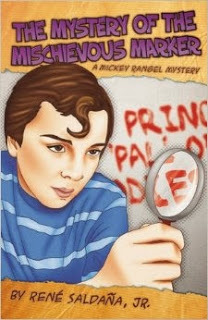
And, would you believe it! I'm soon publishing my first picture book: Dale, dale, dale: una fiesta de numeros/Hit It, Hit It, Hit It: a fiesta of numbers: is due out from Piñata Books in the spring of 2014. The illustrations are done my Carolyn Dee Flores of San Antonio. Mine is her third book. An honor to work with her. More on this book soon.
First, I was fortunate to co-edit a YA anthology with poet Erika Garza-Johnson of South Texas. ¡Juventud!: Growing Up on the Border. Erika collected some of the best poetry I've read in a while, poems that will certainly appeal to the older middle school and high school readers. Poets include Guadalupe Garcia-McCall, José Antonio Rodríguez, Amalia Ortiz, Diane Gonzales Bertrand, Edward Vidaurre, among others. The fiction is pretty good, too, if I say so myself. Fiction writers include Jan Seale, David Rice, Myra Infante, David Bowles, and others. The publisher is VAO out of the Rio Grande Valley of South Texas. Find out about them here: http://publishing.valartout.org.
I also published a short story in ¡Arriba Baseball! A Collection of Latino/a Baseball Fiction, another of VAO's anthologies edited by Robert Moreira. This one includes work by Daboberto Gilb, Norma E. Cantú, Christine Granados, and a few others. A very strong collection, especially for the baseball enthusiast. My piece is called "One Inning at a Time till Nine."
And, I published the third in my Mickey Rangel mystery series. In The Mystery of the Mischievous Marker, our young detective must prove that his arch-nemesis, Bucho, didn't do it. You read that right: Bucho claims not to have been the one to mark up the school's walls with graffiti. Mickey is torn because what if Bucho is innocent and he had a hand in proving him so? But our hero is a hero indeed. He will do what it takes to prove the truth.


And, would you believe it! I'm soon publishing my first picture book: Dale, dale, dale: una fiesta de numeros/Hit It, Hit It, Hit It: a fiesta of numbers: is due out from Piñata Books in the spring of 2014. The illustrations are done my Carolyn Dee Flores of San Antonio. Mine is her third book. An honor to work with her. More on this book soon.
Published on December 06, 2013 20:46
Quick update on the past year:First, I was fortunate to c...
Quick update on the past year:
First, I was fortunate to co-edit a YA anthology with poet Erika Garza-Johnson of South Texas. ¡Juventud!: Growing Up on the Border. Erika collected some of the best poetry I've read in a while, poems that will certainly appeal to the older middle school and high school readers. Poets include Guadalupe Garcia-McCall, José Antonio Rodríguez, Amalia Ortiz, Diane Gonzales Bertrand, Edward Vidaurre, among others. The fiction is pretty good, too, if I say so myself. Fiction writers include Jan Seale, David Rice, Myra Infante, David Bowles, and others. The publisher is VAO out of the Rio Grande Valley of South Texas. Find out about them here: http://publishing.valartout.org.
I also published a short story in ¡Arriba Baseball! A Collection of Latino/a Baseball Fiction, another of VAO's anthologies edited by Robert Moreira. This one includes work by Daboberto Gilb, Norma E. Cantú, Christine Granados, and a few others. A very strong collection, especially for the baseball enthusiast. My piece is called "One Inning at a Time till Nine."
And, I published the third in my Mickey Rangel mystery series. In The Mystery of the Mischievous Marker, our young detective must prove that his arch-nemesis, Bucho, didn't do it. You read that right: Bucho claims not to have been the one to mark up the school's walls with graffiti. Mickey is torn because what if Bucho is innocent and he had a hand in proving him so? But our hero is a hero indeed. He will do what it takes to prove the truth.


And, would you believe it! I'm soon publishing my first picture book: Dale, dale, dale: una fiesta de numeros/Hit It, Hit It, Hit It: a fiesta of numbers: is due out from Piñata Books in the spring of 2014. The illustrations are done my Carolyn Dee Flores of San Antonio. Mine is her third book. An honor to work with her. More on this book soon.
First, I was fortunate to co-edit a YA anthology with poet Erika Garza-Johnson of South Texas. ¡Juventud!: Growing Up on the Border. Erika collected some of the best poetry I've read in a while, poems that will certainly appeal to the older middle school and high school readers. Poets include Guadalupe Garcia-McCall, José Antonio Rodríguez, Amalia Ortiz, Diane Gonzales Bertrand, Edward Vidaurre, among others. The fiction is pretty good, too, if I say so myself. Fiction writers include Jan Seale, David Rice, Myra Infante, David Bowles, and others. The publisher is VAO out of the Rio Grande Valley of South Texas. Find out about them here: http://publishing.valartout.org.
I also published a short story in ¡Arriba Baseball! A Collection of Latino/a Baseball Fiction, another of VAO's anthologies edited by Robert Moreira. This one includes work by Daboberto Gilb, Norma E. Cantú, Christine Granados, and a few others. A very strong collection, especially for the baseball enthusiast. My piece is called "One Inning at a Time till Nine."
And, I published the third in my Mickey Rangel mystery series. In The Mystery of the Mischievous Marker, our young detective must prove that his arch-nemesis, Bucho, didn't do it. You read that right: Bucho claims not to have been the one to mark up the school's walls with graffiti. Mickey is torn because what if Bucho is innocent and he had a hand in proving him so? But our hero is a hero indeed. He will do what it takes to prove the truth.


And, would you believe it! I'm soon publishing my first picture book: Dale, dale, dale: una fiesta de numeros/Hit It, Hit It, Hit It: a fiesta of numbers: is due out from Piñata Books in the spring of 2014. The illustrations are done my Carolyn Dee Flores of San Antonio. Mine is her third book. An honor to work with her. More on this book soon.
Published on December 06, 2013 20:46
September 13, 2012
Been a while...
...since I've blogged anything literary, and so here's something: my bilingual collection of Mexican American folktales has been published recently by Piñata Books; it's called Dancing with the Devil and Other Tales from Beyond, pictured here and to the left:
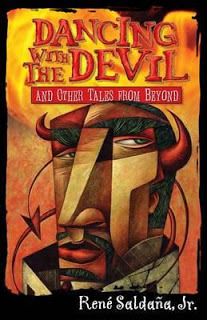 Included in the book are tales about la llorona (the wailing woman), la mano pachona (the severed hand), and the devil as a handsome teen at a middle school dance. Also, there aren't specifics yet but Piñata Books has also bought a picture book manuscript and it's due out possibly as early as spring of 2013; it's a bilingual counting book that also doubles as a story about Mexican American birthday parties.
Included in the book are tales about la llorona (the wailing woman), la mano pachona (the severed hand), and the devil as a handsome teen at a middle school dance. Also, there aren't specifics yet but Piñata Books has also bought a picture book manuscript and it's due out possibly as early as spring of 2013; it's a bilingual counting book that also doubles as a story about Mexican American birthday parties.
 Included in the book are tales about la llorona (the wailing woman), la mano pachona (the severed hand), and the devil as a handsome teen at a middle school dance. Also, there aren't specifics yet but Piñata Books has also bought a picture book manuscript and it's due out possibly as early as spring of 2013; it's a bilingual counting book that also doubles as a story about Mexican American birthday parties.
Included in the book are tales about la llorona (the wailing woman), la mano pachona (the severed hand), and the devil as a handsome teen at a middle school dance. Also, there aren't specifics yet but Piñata Books has also bought a picture book manuscript and it's due out possibly as early as spring of 2013; it's a bilingual counting book that also doubles as a story about Mexican American birthday parties.
Published on September 13, 2012 13:17
June 17, 2012
A Few Sweden Pics: Gränna
Published on June 17, 2012 07:48
January 16, 2012
Great Review of The Lemon Tree Caper!
Hey, here's a great review of The Lemon Tree Caper: A Mickey Rangel Mystery, the second in that series. I'm so happy about it: http://www.midwestbookreview.com/cbw/jan_12.htm.
Published on January 16, 2012 21:24
December 22, 2011
Headed Down to the RGV!
Well, the family and I are headed down to South Texas for Christmas. The boys will be seeing their 'Buelo and 'Buela for a few days, hanging out with the Raymers, the Costales all the way from Hawaii, the Rincones, and a few other folks from back in the day. Also, Friday night from 8PM to around 11PM, I'm joinging Daniel Garcia Ordaz and a few other poets and writers at Carinos in McAllen for a reading. It's like a flash mob, put together by Daniel on the spur of the moment, so thanks to El Mariachi for getting it done.
I'm reading out of Finding Our Way, the now out of print title, and selling copies, talking about my new chapter book, the bilingual The Lemon Tree Caper: A Mickey Rangel Mystery, and possibly reading some other stuff. Maybe a poem or two. Selling and signing copies on the spot, too.
I'm reading out of Finding Our Way, the now out of print title, and selling copies, talking about my new chapter book, the bilingual The Lemon Tree Caper: A Mickey Rangel Mystery, and possibly reading some other stuff. Maybe a poem or two. Selling and signing copies on the spot, too.
Published on December 22, 2011 16:45
René Saldaña Jr.'s Blog
- René Saldaña Jr.'s profile
- 19 followers
René Saldaña Jr. isn't a Goodreads Author
(yet),
but they
do have a blog,
so here are some recent posts imported from
their feed.


